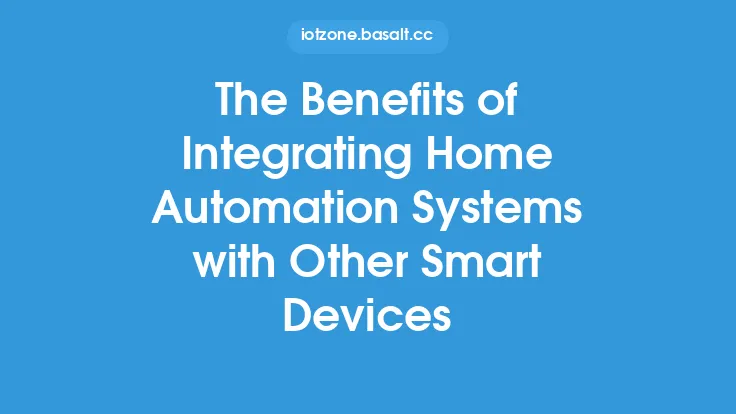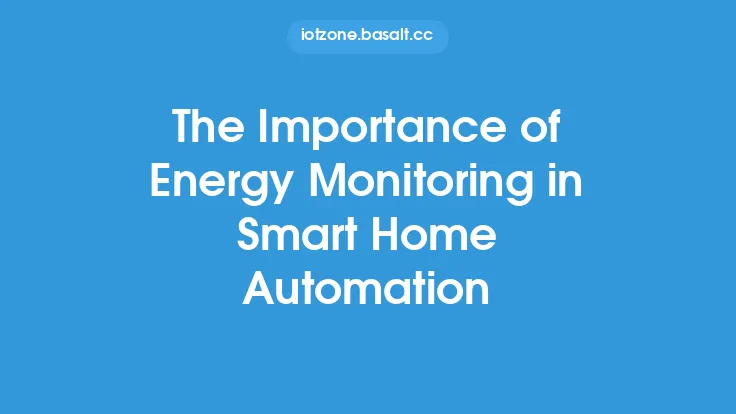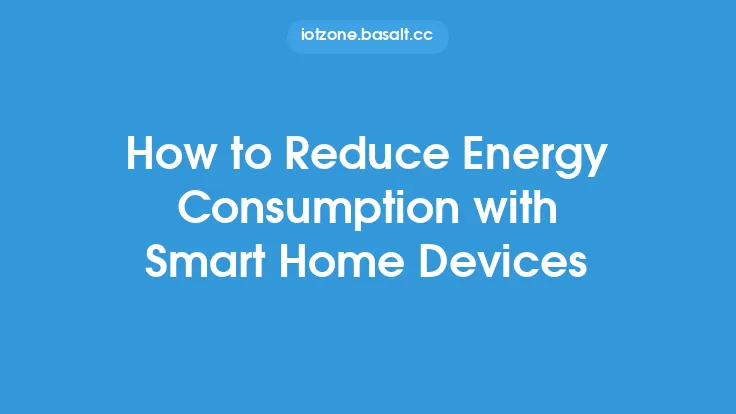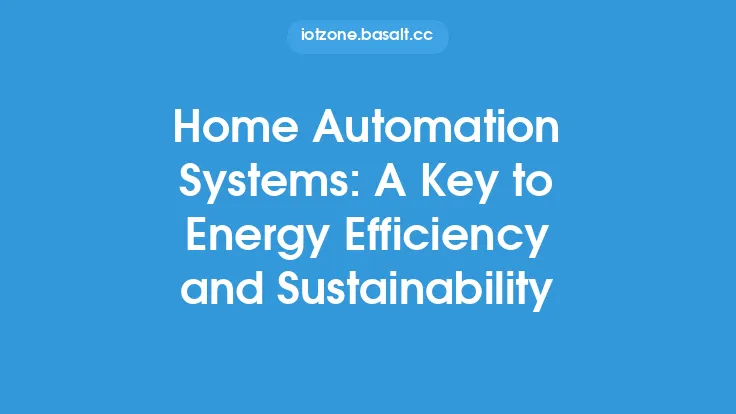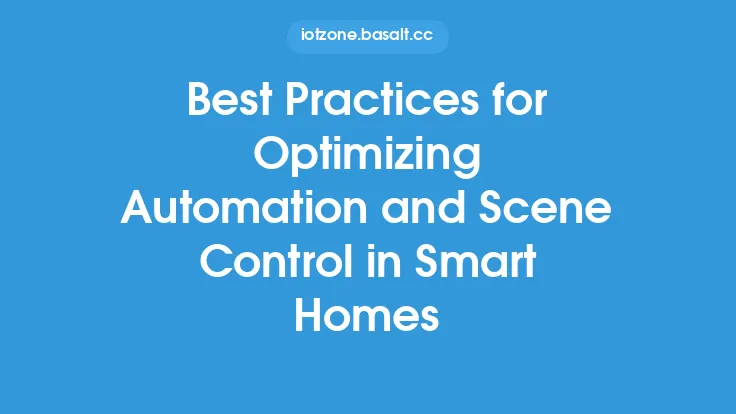The concept of smart home automation has revolutionized the way we live, work, and interact with our living spaces. One of the most significant benefits of smart home automation is the ability to optimize energy usage, which not only helps reduce energy consumption but also saves homeowners money on their utility bills. In this article, we will delve into the world of smart home automation systems and explore how they can be used to optimize energy usage.
Introduction to Smart Home Automation Systems
Smart home automation systems are designed to integrate various aspects of a home's operations, including lighting, temperature, security, and entertainment, into a single, cohesive system. These systems use a combination of sensors, controllers, and actuators to monitor and control various devices and appliances in the home. When it comes to energy management, smart home automation systems can play a crucial role in optimizing energy usage by providing real-time monitoring and control of energy consumption.
Components of Smart Home Automation Systems
A typical smart home automation system consists of several components, including:
- Sensors: These are devices that detect changes in the environment, such as temperature, humidity, and light levels. Sensors can be used to monitor energy usage and detect opportunities for energy savings.
- Controllers: These are devices that process information from sensors and send commands to actuators to control various devices and appliances.
- Actuators: These are devices that receive commands from controllers and perform specific actions, such as turning lights on or off or adjusting the thermostat.
- Gateways: These are devices that connect the smart home automation system to the internet, allowing homeowners to monitor and control their system remotely.
- User interfaces: These are devices or software applications that allow homeowners to interact with their smart home automation system, such as smartphones, tablets, or wall-mounted touchscreens.
Energy Management and Monitoring
Smart home automation systems can be used to monitor and control energy usage in real-time, providing homeowners with detailed information about their energy consumption. This information can be used to identify areas of energy inefficiency and make changes to reduce energy waste. Some common energy management and monitoring features of smart home automation systems include:
- Real-time energy monitoring: This feature allows homeowners to monitor their energy usage in real-time, providing detailed information about energy consumption and identifying areas of energy inefficiency.
- Energy usage tracking: This feature allows homeowners to track their energy usage over time, providing insights into energy consumption patterns and identifying opportunities for energy savings.
- Automated energy control: This feature allows homeowners to automate energy control, such as turning off lights and appliances when not in use, to reduce energy waste.
Optimization Techniques
Smart home automation systems can use various optimization techniques to reduce energy consumption, including:
- Scheduling: This technique involves scheduling energy-intensive tasks, such as laundry and dishwashing, during off-peak hours when energy demand is lower.
- Load shedding: This technique involves automatically turning off non-essential devices and appliances during peak hours to reduce energy demand.
- Load shifting: This technique involves shifting energy-intensive tasks to off-peak hours, such as charging electric vehicles during the night when energy demand is lower.
- Energy storage: This technique involves using energy storage systems, such as batteries, to store excess energy generated by renewable energy sources, such as solar panels, and using it during peak hours to reduce energy demand.
Benefits of Optimizing Energy Usage
Optimizing energy usage with smart home automation systems can provide numerous benefits, including:
- Reduced energy consumption: By monitoring and controlling energy usage in real-time, smart home automation systems can help reduce energy consumption and lower utility bills.
- Increased energy efficiency: By automating energy control and using optimization techniques, smart home automation systems can help increase energy efficiency and reduce energy waste.
- Enhanced comfort: By providing real-time monitoring and control of energy usage, smart home automation systems can help enhance comfort and convenience, allowing homeowners to enjoy a more comfortable and convenient living space.
- Environmental benefits: By reducing energy consumption and increasing energy efficiency, smart home automation systems can help reduce greenhouse gas emissions and contribute to a more sustainable future.
Technical Considerations
When implementing a smart home automation system for energy optimization, there are several technical considerations to keep in mind, including:
- Communication protocols: Smart home automation systems use various communication protocols, such as Zigbee, Z-Wave, and Bluetooth, to communicate between devices. Choosing the right protocol can be critical to ensuring reliable and efficient communication.
- Device compatibility: Ensuring that devices are compatible with the smart home automation system is critical to ensuring seamless integration and control.
- Data analytics: Smart home automation systems can generate vast amounts of data, which can be used to optimize energy usage. Choosing a system that provides advanced data analytics capabilities can be critical to unlocking the full potential of energy optimization.
- Cybersecurity: Smart home automation systems can be vulnerable to cyber threats, which can compromise the security and integrity of the system. Choosing a system that provides robust cybersecurity features can be critical to ensuring the security and reliability of the system.
Best Practices for Implementation
When implementing a smart home automation system for energy optimization, there are several best practices to keep in mind, including:
- Conducting an energy audit: Conducting an energy audit can help identify areas of energy inefficiency and provide insights into energy consumption patterns.
- Choosing the right devices: Choosing devices that are compatible with the smart home automation system and optimized for energy efficiency can be critical to ensuring seamless integration and control.
- Configuring the system: Configuring the system to optimize energy usage can involve setting schedules, load shedding, and load shifting, as well as monitoring and controlling energy usage in real-time.
- Monitoring and maintenance: Regularly monitoring and maintaining the system can help ensure that it continues to operate efficiently and effectively, providing optimal energy savings and comfort.
Conclusion
Optimizing energy usage with smart home automation systems can provide numerous benefits, including reduced energy consumption, increased energy efficiency, enhanced comfort, and environmental benefits. By understanding the components of smart home automation systems, energy management and monitoring features, optimization techniques, and technical considerations, homeowners can unlock the full potential of energy optimization and enjoy a more comfortable, convenient, and sustainable living space.
